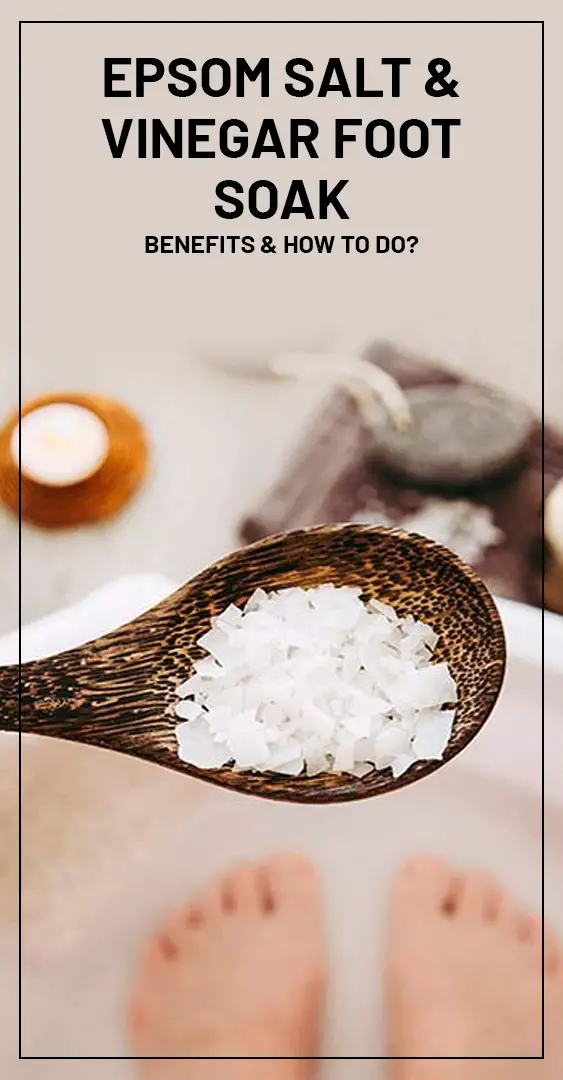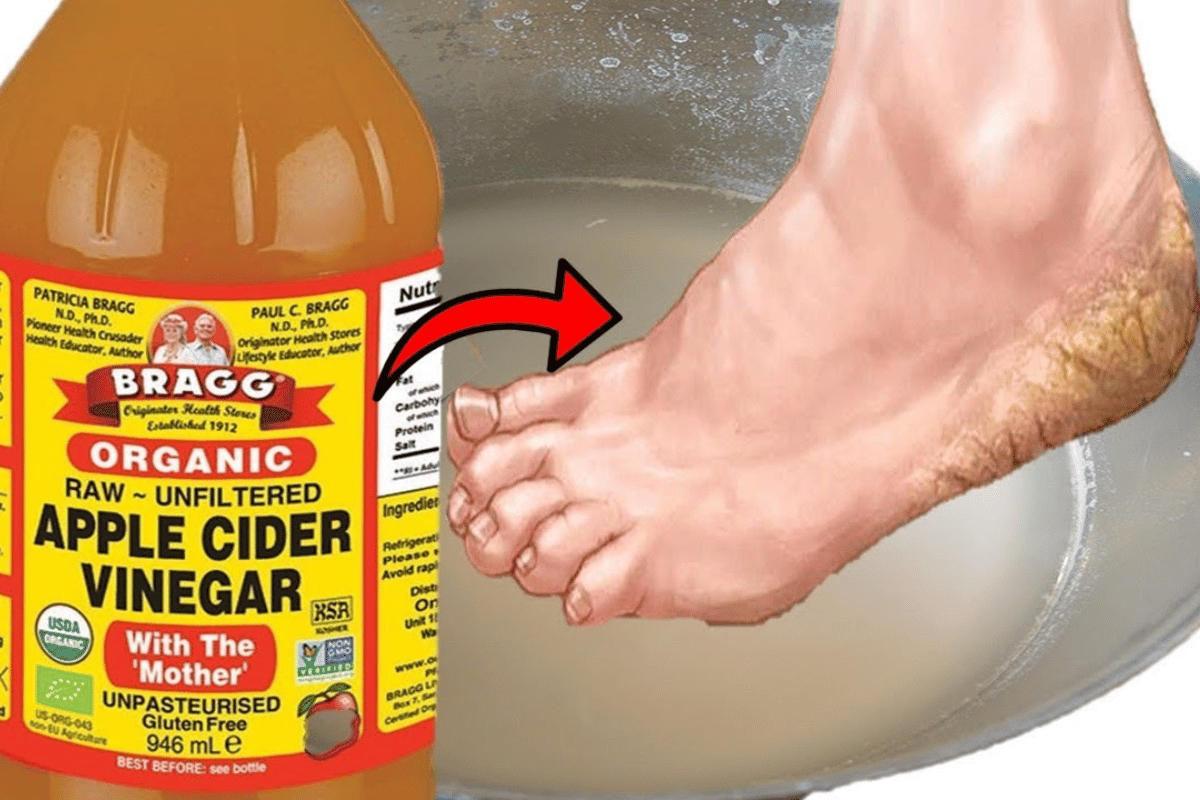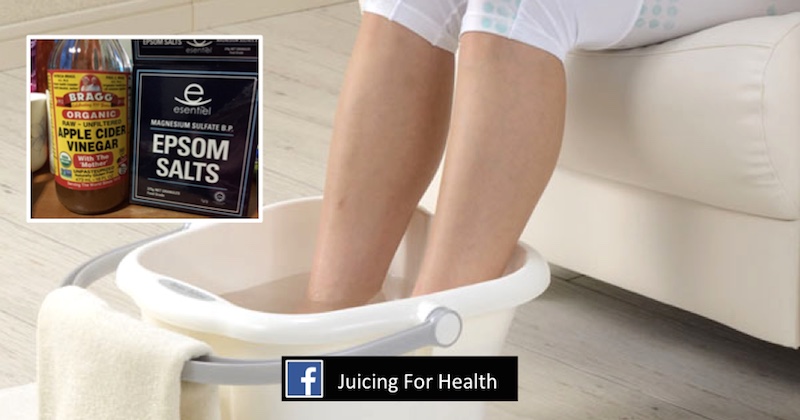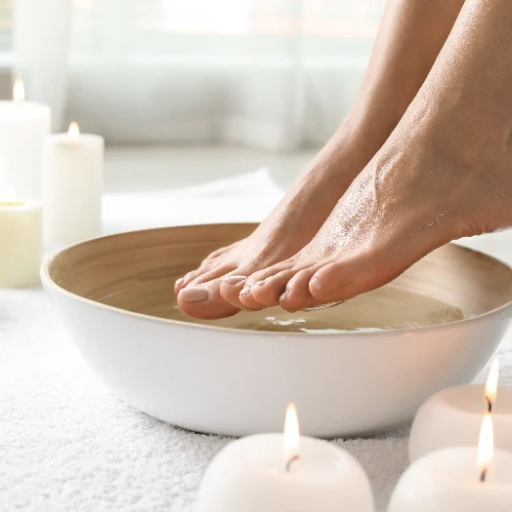Apple Cider Vinegar And Epsom Salt Foot Soak

Foot discomfort is a pervasive issue affecting millions, ranging from minor aches to debilitating pain that impacts daily life. The search for accessible and effective remedies often leads individuals to explore home-based treatments. Among the popular options gaining traction are foot soaks utilizing Apple Cider Vinegar (ACV) and Epsom salt.
This article delves into the purported benefits of ACV and Epsom salt foot soaks, examining the scientific evidence (or lack thereof) supporting these claims. It aims to provide a balanced perspective on the potential advantages and drawbacks, empowering readers to make informed decisions about their foot care regimen.
Understanding the Components
Apple Cider Vinegar, derived from fermented apple juice, is touted for its acidic properties. Its proponents suggest it can combat fungal infections, reduce inflammation, and soften calluses.
Epsom salt, chemically known as magnesium sulfate, has a long history of use for muscle relaxation and pain relief. It is believed that magnesium is absorbed through the skin during a soak, though this claim remains a subject of debate within the scientific community.
Purported Benefits of ACV Foot Soaks
One of the primary reasons people use ACV foot soaks is for their supposed antifungal properties. Some believe the acetic acid in ACV can help kill fungi responsible for conditions like athlete's foot and nail fungus.
Anecdotal evidence suggests that ACV can soften calluses and corns, making them easier to remove. However, direct scientific evidence supporting this claim is limited.
ACV is also sometimes used to combat foot odor. The acidic nature of ACV is believed to help neutralize odor-causing bacteria.
Purported Benefits of Epsom Salt Foot Soaks
Epsom salt foot soaks are frequently used to relieve sore and tired feet. The magnesium sulfate is believed to reduce inflammation and muscle tension.
Some people believe that Epsom salt can help draw out splinters and relieve minor skin irritations. The osmotic effect of the salt is thought to contribute to this.
Epsom salts are also credited with promoting relaxation and stress reduction. The warm water combined with the salt is considered a soothing experience.
The Science Behind the Claims
While anecdotal evidence abounds, rigorous scientific studies specifically examining the efficacy of ACV and Epsom salt foot soaks are scarce. Much of the support for these treatments relies on the known properties of their individual components.
The antifungal properties of ACV have been investigated in vitro, demonstrating some effectiveness against certain types of fungi. However, the concentration required for these effects may not be achievable through a simple foot soak, and penetration into deeper tissues may be limited.
The claim that magnesium is absorbed through the skin from Epsom salt soaks is a subject of ongoing debate. Some studies suggest minimal absorption, while others report detectable increases in magnesium levels after soaking. The extent of absorption may depend on factors like soak duration, water temperature, and individual skin permeability.
A study published in the Journal of the American Academy of Dermatology indicated that while topical magnesium may have some effect on skin hydration, the amount absorbed during an Epsom salt bath might not be significant enough to offer substantial therapeutic benefits.
Potential Risks and Precautions
Despite their perceived benefits, ACV and Epsom salt foot soaks are not without potential risks. It's crucial to consider these before incorporating them into your foot care routine.
ACV is acidic and can cause skin irritation, especially if used undiluted. Individuals with sensitive skin should dilute ACV significantly and monitor for any adverse reactions.
Excessive use of Epsom salt can lead to dehydration. Furthermore, people with kidney problems should consult their doctor before using Epsom salt, as their kidneys may not be able to process the magnesium efficiently.
Individuals with diabetes or neuropathy should exercise caution when using foot soaks. They may have reduced sensation in their feet, making them more susceptible to burns or other injuries.
It's always advisable to perform a patch test before soaking the entire foot. Apply a small amount of the diluted ACV or Epsom salt solution to a small area of skin and wait 24 hours to check for any adverse reactions.
Alternative Perspectives and Expert Opinions
Podiatrists generally recommend focusing on evidence-based treatments for foot conditions. They emphasize the importance of proper foot hygiene, well-fitting shoes, and professional medical advice for persistent problems.
Many medical professionals acknowledge that while foot soaks may provide temporary relief and relaxation, they are not a substitute for conventional medical treatment. They advocate for consulting a doctor or podiatrist for accurate diagnosis and appropriate treatment of foot ailments.
Some dermatologists caution against relying solely on ACV for fungal infections. They recommend using over-the-counter or prescription antifungal medications as directed by a healthcare professional.
"While some people find relief from foot soaks, it's essential to remember that they are not a cure-all," says Dr. Emily Carter, a board-certified podiatrist. "If you have a persistent foot problem, it's best to seek professional medical advice."
Practical Considerations and Recommendations
If you choose to try ACV or Epsom salt foot soaks, it's important to do so safely and responsibly. Start with diluted solutions and monitor for any adverse reactions.
A typical ACV foot soak involves mixing one part ACV with two to three parts warm water. Soak your feet for 15-20 minutes.
For an Epsom salt foot soak, dissolve about half a cup of Epsom salt in a basin of warm water. Soak your feet for 20-30 minutes.
Always dry your feet thoroughly after soaking, especially between the toes, to prevent fungal growth. Follow up with a moisturizing lotion to keep your skin hydrated.
Looking Ahead: The Need for Further Research
The anecdotal evidence supporting the benefits of ACV and Epsom salt foot soaks is abundant, but scientific validation remains limited. Further research is needed to determine the true efficacy of these treatments.
Future studies should focus on investigating the mechanisms of action of ACV and Epsom salt, as well as their effectiveness against specific foot conditions. Randomized controlled trials are needed to compare these treatments to placebo and standard medical interventions.
Until more conclusive evidence emerges, it's important to approach ACV and Epsom salt foot soaks with realistic expectations. They may provide temporary relief for some individuals, but they should not be considered a replacement for professional medical care.
Conclusion
Apple Cider Vinegar and Epsom salt foot soaks are popular home remedies for various foot ailments. While some individuals swear by their effectiveness in relieving pain, softening calluses, and combating fungal infections, scientific evidence supporting these claims is limited.
It's essential to approach these treatments with caution, considering the potential risks and consulting with a healthcare professional for persistent foot problems. Ultimately, a balanced approach combining home remedies with evidence-based medical care is the most prudent strategy for maintaining foot health.
As research continues, a clearer understanding of the true benefits and limitations of ACV and Epsom salt foot soaks will emerge. In the meantime, informed decision-making and responsible usage are paramount.


















